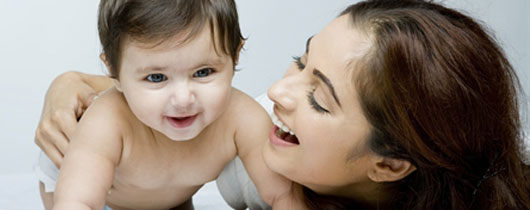When should the first feed be given?

The answer to the above question is as soon as possible. In fact, a full-term newborn’s sucking reflex is at peak after 30 minutes or so after birth provided anesthesia has not been administered and he is not under effect of drugs. If this time of first 30-45 minutes is missed then the sucking reflex may not be so strong for the next 24-36 hours. So it is advised to ideally give baby first feed between 30-45 minutes after birth.
Early feeding is good for the mother:
Early feeding and nursing is good not only for the baby but also for the mother. This is so because nursing immediately would fasten the delivery of placenta. This will in turn cause you to have less blood loss because the uterus begins to contract as the baby begins sucking.
Early first feeding is good for the baby:
Early feeding of first milk (also called colostrum) is great for the baby as it is rich in content and indispensable source of protection against diseases for the baby.
Being comfortable during feeding:
Mothers and baby need to be together and comfortable to have a satisfying experience for both. You’ll probably find it convenient to feed the baby each time in the same place, for you can then have handy all the little things you need. Whether you are breast or bottle-feeding, get yourself comfortable. Arrange pillows to support your back, and try to make the feeding a refreshing time for you as well as the baby. If you sit, select comfortable chair that will let you hold the baby with some support for your arm. Rocking chairs must have been invented for these sweet moments. Find a way to support your feet, too, a hassock or footstool.
How to get the baby started?
To get the baby started, press a little milk onto his lips. If he's frantically nuzzling about, stroke the cheek nearest the nipple and he will turn toward it. If you touch the opposite cheek, he'll turn away.
What to do after the first feed?
When the baby stops sucking, it’s time to give him a chance so that he may release any air which he has swallowed along with milk. You can “bubble” or “burp” him in any number of ways. Some babies bubble quite easily when they are lifted to the shoulder and patted on their back. It doesn’t take a whack. Other burp best when they are laid across the knee, stomach is side down, and rubbed or patted. You may like to hold the baby on your lap, in a sitting position, his back against your chest. Milk may sometimes come up along with swallowed air, so have a clean diaper or cloth ready. These bubbling moments are good times just to enjoy the feel of the baby. They’re an excuse to cuddle.
After the swallowed air is released, and he’s had a rest, the baby may feel hungry again and continue to nurse for a time. Then he may turn away from the nipple, fall asleep, or let the milk run out of his mouth. It's tempting to try to rouse him to get in just a bit more, but he knows better than you how much he can hold at any one feeding; so don’t urge him. He’ll let you know when he’s hungry again.
Occasionally, a baby does not burp, no matter how you hold him. If so, put the reluctant bubbler back to bed on his right side. This permits the stomach to hang loose, and soon allows the release of any trapped air.

